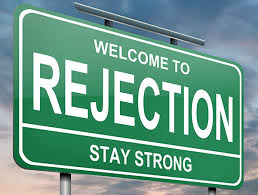Imagine you worked for Los Alamos National Laboratory as a technical specialist, and you discovered there was the raw material for 20,000 radioactive dirty bombs in civilians hands… spread throughout the United States, and you were in charge of finding them.
What would you do?
Quick Facts:
- Over 20,0000 “sealed-source ” radioactive “fit in your pocket” sized devices exist that could easily be turned into dirty bombs.
- These small devices, ranging in size from a button to a cell phone, are sealed metal containers with neutron-emitting radioactive material inside. These were issued to universities and private companies by the US government starting in the 1950s for research, geological exploration, and medical diagnostics.
- The potential for causing widespread and economic catastrophe was huge. By strapping a stick of dynamite to a sealed source and setting it off in a densely populated area, terrorists could release radiation that would make major areas uninhabitable for years.
- Truly a scary proposition, with the potential for disaster if they were not safely secured before the bad guys got them.
- US Department of Energy was aware of the problem, but solving it remained a low priority and was never received adequate funding.
The Project: Create, manage and implement the Offsite Recovery Project (OSRP) to find, transport and then dispose of all 20,000 potential dirty bombs, before they could be used by terrorists
Project Challenges:
✓ The issue had been neglected for years.
✓ There was no budget.
✓ No disposal standards existed for this class of device, so new standards would have to be developed and be approved by the Nuclear Regulatory Commission.
✓ No existing radioactive waste disposal site would accept them.
✓ The project team was made up of opinionated technical experts from over 12 agencies and the private sector, with NO COMMON LANGUAGE.
✓ Each of these scientists bought unique technical jargon and preferred operating procedures … and they would all have to come to a consensus BEFORE any plan could be implemented
Project Manager Profile = Accidental Project Manager
Chuck was a PhD nuclear physicist at the lab, with ZERO training in project management who had become the “accidental project manager,” thrust into this critical role because of his technical expertise.
Chuck’s Unspoken Concerns:
- I’ve never done this before – what if I screw up and people die?
- I’ve never done this before, I have no leverage or authority over agencies I needed to take action – who will listen to me?
- How will I get everyone to talk the same language, and get beyond their own agendas?
- Could this kill my career?
- If I don’t do this, who will? … it has to be done, no matter what the personal consequences for me – as a concerned citizen, as a family man, I have to do my part.
- How do I get started?
The Action Plan
Chuck and I first met when he attended a Managing Critical Projects workshop I taught at the LANL Management Institute. Chuck was comfortable solving scientific problems, but managing complex high-stake projects were new to him.
When he called me for advice – I told him to follow the 4 Cornerstone Questions FormatI’d originally taught him.
Chuck knew that before he got to the details of the plan he had to get everyone in agreement and on the same page so he began by writing this team Objective on the board:
“Team prepares a clear, comprehensive work plan for developing disposal options for field sources”.
They began with the first question – WHY are we doing this project and WHAT must we deliver?, then worked their way through the 4 cornerstone questions.
They sketched out a cause and effect logic chain, which visually linked their work plan through the sequence of intermediate Objectives needed to reach the Goal of Protect the Health and Safety of the nation. They came to an agreement on the big-picture strategy to solve this problem – knowing the details would come from those agreements.
Utilizing the Logical Frameworks matrix I had provided, Chuck quickly went from doubting himself and being overwhelmed with the scope of the project – to being a confident leader – BECAUSE HE HAD A PROVEN SUCCESS TEMPLATE TO FOLLOW … and it worked.
The Results
- These dangerous weapons are now safely under control. Whew! One less thing to worry about…we can all breathe easier.
- Accomplished their goal ahead of schedule – unusual in projects of this type.
- The project received official LANL recognition for outstanding planning and execution.
- Team members felt justifiably proud and rewarded for using “Project Superpowers” on a job well done.
To learn the 4 Cornerstone Questions and Project Super Power strategies Chuck used to go from doubt to confidence and success, click here to register for my one hour Project Super Power System training at no cost.
—————-
Terry Schmidt is a business strategist, keynoter, and author of Strategic Project Management Made Simple, and chief honcho at ManagementPro.com. He helps leaders at all levels to develop the skill set and mindset to accomplish outstanding results.













